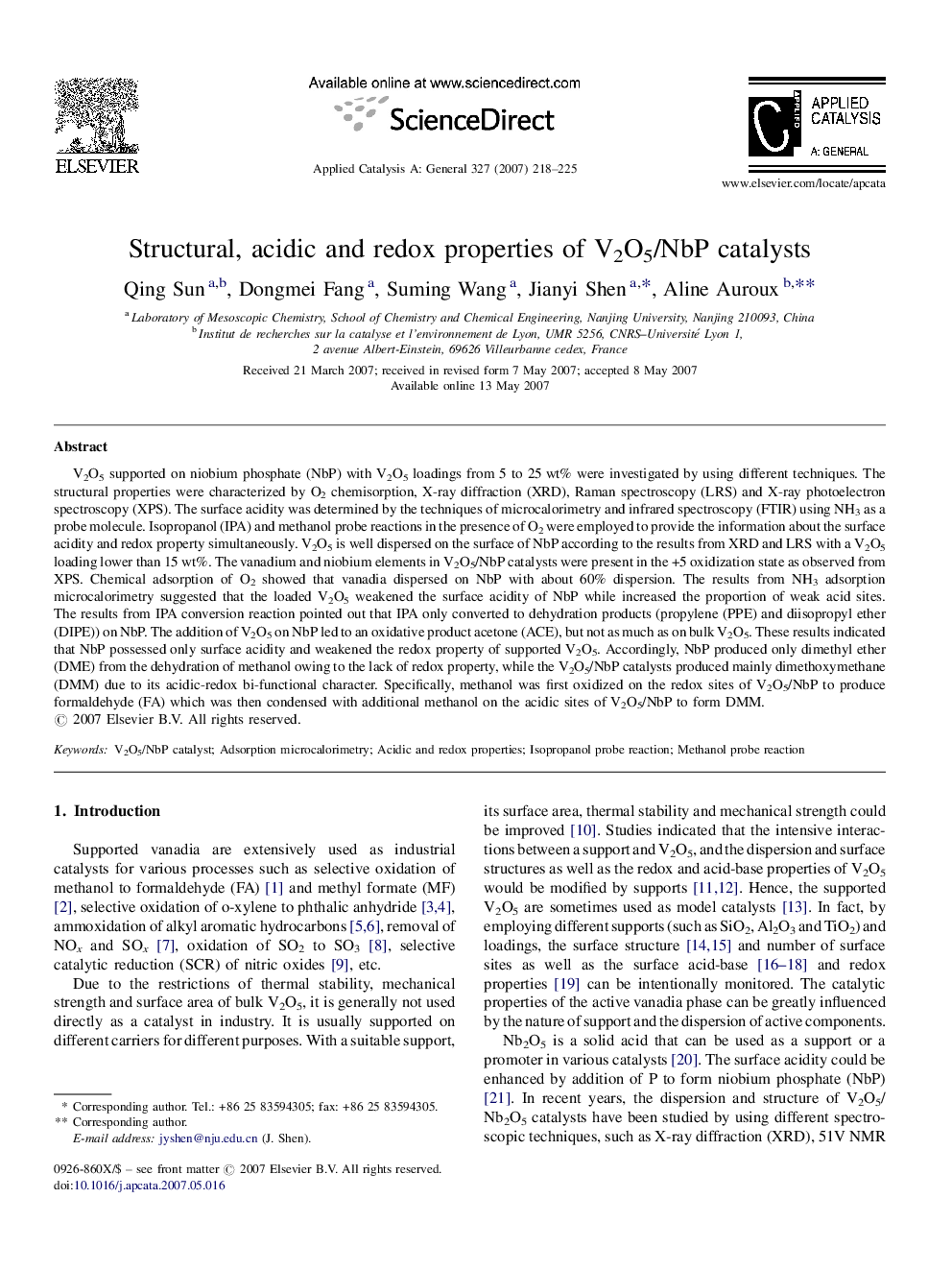| کد مقاله | کد نشریه | سال انتشار | مقاله انگلیسی | نسخه تمام متن |
|---|---|---|---|---|
| 44151 | 46005 | 2007 | 8 صفحه PDF | دانلود رایگان |

V2O5 supported on niobium phosphate (NbP) with V2O5 loadings from 5 to 25 wt% were investigated by using different techniques. The structural properties were characterized by O2 chemisorption, X-ray diffraction (XRD), Raman spectroscopy (LRS) and X-ray photoelectron spectroscopy (XPS). The surface acidity was determined by the techniques of microcalorimetry and infrared spectroscopy (FTIR) using NH3 as a probe molecule. Isopropanol (IPA) and methanol probe reactions in the presence of O2 were employed to provide the information about the surface acidity and redox property simultaneously. V2O5 is well dispersed on the surface of NbP according to the results from XRD and LRS with a V2O5 loading lower than 15 wt%. The vanadium and niobium elements in V2O5/NbP catalysts were present in the +5 oxidization state as observed from XPS. Chemical adsorption of O2 showed that vanadia dispersed on NbP with about 60% dispersion. The results from NH3 adsorption microcalorimetry suggested that the loaded V2O5 weakened the surface acidity of NbP while increased the proportion of weak acid sites. The results from IPA conversion reaction pointed out that IPA only converted to dehydration products (propylene (PPE) and diisopropyl ether (DIPE)) on NbP. The addition of V2O5 on NbP led to an oxidative product acetone (ACE), but not as much as on bulk V2O5. These results indicated that NbP possessed only surface acidity and weakened the redox property of supported V2O5. Accordingly, NbP produced only dimethyl ether (DME) from the dehydration of methanol owing to the lack of redox property, while the V2O5/NbP catalysts produced mainly dimethoxymethane (DMM) due to its acidic-redox bi-functional character. Specifically, methanol was first oxidized on the redox sites of V2O5/NbP to produce formaldehyde (FA) which was then condensed with additional methanol on the acidic sites of V2O5/NbP to form DMM.
A series of V2O5/NbP catalysts were prepared by the wetness impregnation method. The results showed that V2O5 could be well dispersed on the surface of NbP. The strength of surface acidity of NbP was decreased while the proportion of weak acid sites was increased upon the addition of V2O5 on NbP. The isopropanol conversion reaction and methanol oxidation reaction indicated that NbP possessed only surface acidity and weakened the redox properties of supported V2O5.Figure optionsDownload as PowerPoint slide
Journal: Applied Catalysis A: General - Volume 327, Issue 2, 15 August 2007, Pages 218–225